 W
WFrank William Abagnale Jr. is an American author and convicted felon. According to Abagnale, he began to con people and pass bad checks when he was 15 years old. During his teens and early twenties he was arrested multiple times and was convicted and imprisoned in the United States and Europe. Abagnale co-wrote a 1980 book on his life that inspired the 2002 film of the same name, Catch Me If You Can. He has also written four other books. Abagnale runs Abagnale and Associates, a consultancy firm.
 W
WAdémar de Chabannes was a French monk, composer, scribe and literary forger. He was associated with the Abbey of Saint Martial, Limoges, where he was a central figure in the Saint Martial school, an important center of early medieval music. Much of his career was spent copying and transcribing earlier accounts of Frankish history; his major work was the Chronicon Aquitanicum et Francicum. He is well-known for forging a Vita, purportedly by Aurelian of Limoges, that indicated Saint Martial was one of the original apostles. Though he successfully convinced the local bishop and abbot of its authenticity, the traveling monk Benedict of Chiusa exposed his forgery and damaged Adémar's reputation.
 W
WIslam Akhun was an Uyghur con-man from Khotan who forged numerous manuscripts and printed documents and sold them as ancient Silk Road manuscripts. Since the accidental discovery of the Bower Manuscript in 1889 such texts had become much sought after. The imperial powers of the time sponsored archaeological expeditions to Central Asia, including Britain, France, Germany, Russia and Japan.
 W
WAnnius of Viterbo was an Italian Dominican friar, scholar, and historian, born Giovanni Nanni (Nenni) in Viterbo. He is now remembered for his fabrications.
 W
WSir Edmund Trelawny Backhouse, 2nd Baronet was a British oriental scholar, Sinologist, and linguist whose books exerted a powerful influence on the Western view of the last decades of the Qing Dynasty (1644–1912). Since his death, however, it has been established that the major source of his China Under the Empress Dowager is a forgery, most likely by Backhouse himself.
 W
WAlecu Beldiman, common rendition of Alexandru Beldiman, also known as Alecul or Aleco Beldiman, was a Moldavian statesman, translator and poet, one of the forerunners of Romanian nationalism. A scion of the boyar elite, he was the eldest son of Vornic Gheorghe Beldiman, and the nephew-in-law of chronicler Enache Kogălniceanu. Alecu himself held high commission in the Moldavian military forces and bureaucracy, but secretly resented the Phanariote regime which had awarded them. He may have affiliated with a loose group known as the "National Party", championing an alliance between Moldavia's independence from the Ottoman Empire and support for the French Republic.
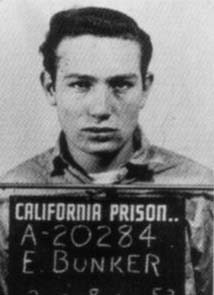 W
WEdward Heward Bunker was an American author of crime fiction, a screenwriter, convicted felon and an actor. He wrote numerous books, some of which have been adapted into films. He wrote the scripts for - and acted in - Straight Time (1978), Runaway Train (1985) and Animal Factory (2000). He also played a minor role in Reservoir Dogs (1992).
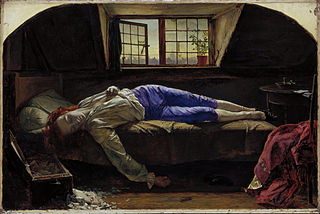 W
WThomas Chatterton was an English poet whose precocious talents ended in suicide at age 17. He was an influence on Romantic artists of the period such as Shelley, Keats, Wordsworth and Coleridge.
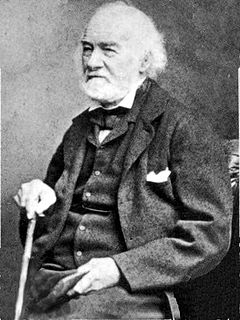 W
WJohn Payne Collier was an English Shakespearean critic and forger.
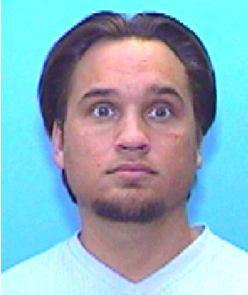 W
WMatthew Bevan "Matt" Cox is an American former mortgage broker and admitted mortgage fraudster. Cox, also a true crime author, wrote an unpublished manuscript entitled The Associates in which the main character traveled the country to perpetrate a mortgage fraud similar to the one Cox ran.
 W
WRichard Allen Davis is an American convicted murderer and child molester, whose criminal record fueled support for passage of California's "three-strikes law" for repeat offenders. He is currently on death row in Adjustment Center at San Quentin State Prison, California. He was convicted in 1996 of first-degree murder and four special circumstances of 12-year-old Polly Klaas. Davis abducted Klaas on October 1, 1993, from her home in Petaluma, California.
 W
WCharles Dawson was a British amateur archaeologist who claimed to have made a number of archaeological and palaeontological discoveries that were later exposed as frauds. These included the Piltdown Man, which he presented in 1912.
 W
WJeanne de Divion was a French forger.
 W
WWilliam Dodd was an English Anglican clergyman and a man of letters. He lived extravagantly, and was nicknamed the "Macaroni Parson". He dabbled in forgery in an effort to clear his debts, and was caught and convicted. Despite a public campaign for a Royal pardon, in which he received the assistance of Samuel Johnson, he was hanged at Tyburn for forgery.
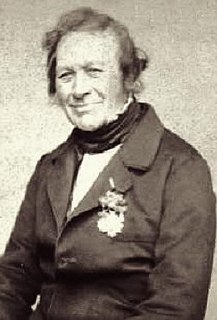 W
WLouis Charles André Alexandre Du Mège or Dumège,, was a French scholar, archaeologist and historian.
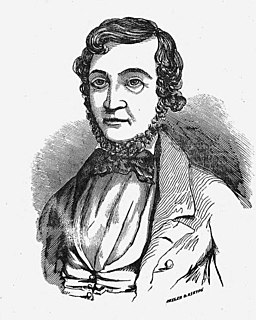 W
WMonroe Edwards was an American slave trader, forger, and criminal who was the subject of a well-publicized trial and conviction in 1842. Originally from Kentucky, Edwards moved to New Orleans then settled in Texas. He smuggled slaves into Brazil in 1832 and used the proceeds to purchase land in Texas. In 1836, he was again smuggling slaves, this time into Texas. After attempting to swindle his partner out of the profits of the venture, partly with forged documents, Edwards was forced to flee the Republic of Texas to the United States. He then tried to scam money out of various abolitionists in the United States and the United Kingdom, partly with forged letters of introduction. He traveled to the United Kingdom, but his schemes were mainly unsuccessful and he returned to the United States in mid-1841.
 W
WVeitel Heine Ephraim, 1703 – 16 May 1775 in Berlin) was jeweller to the Prussian Court, a silk entrepreneur in Potsdam, the chairman of the Jewish congregation in Berlin/Prussia, and since 1756 Mintmaster in Saxony and from 1758 also in Prussia. During the Seven Years' War Frederick the Great devalued the Prussian coin five times in order to finance the war; debased coins were produced with the help from Ephraim and Daniel Itzig, and spread outside Prussia: in Saxony, Poland, and Kurland. Ephraim and his companion Itzig became infamous for adding copper, up to 70%, into the fake coins, known as Ephraimiten. The coin fraud of the entrepreneurs became an existential element of war financing. Heinrich Carl von Schimmelmann, Johann Ernst Gotzkowsky and Leendert Pieter de Neufville rivalled Ephraim's exchange business.
 W
WAlexis Flores is a Honduran fugitive, murderer and child rapist wanted for the kidnapping, rape, and murder of five-year-old Iriana DeJesus in Philadelphia, Pennsylvania, in 2000. Flores is the 487th fugitive to be placed on the FBI's Ten Most Wanted Fugitives list.
Henry Buxton Forman was a Victorian-era bibliographer and antiquarian bookseller whose literary reputation is based on his bibliographies of Percy Shelley and John Keats. In 1934 he was revealed to have been in a conspiracy with Thomas James Wise (1859–1937) to purvey large quantities of forged first editions of Georgian and Victorian authors.
 W
WSchicchi was a medieval knight of Florence in the thirteenth century. His life, including his crime of fraud by being a talented imposter, is detailed by Dante in the Inferno, which inspired a Puccini opera and a later play. While Dante's depiction of Schicchi's eternal punishment with insanity in hell, inspired a painting by Bouguereau.
 W
WThomas Hall was a New Zealand commission agent, forger and murderer.
 W
WJohn Henry Gooding, alias Frank Digby Hardy was an English naval writer, journalist, soldier, career criminal and would-be spy during the Irish War of Independence. Born in Devonport, Plymouth to a middle-class family, he was educated in London before gaining notoriety in his native Devon as a bigamist and a cheque forger. Imprisoned numerous times throughout his life, he was enlisted by British intelligence to capture Irish Republican Army leader Michael Collins in 1920.
 W
WJohn Hatfield (1758?–1803) was a notorious English forger, bigamist and imposter.
 W
WIacob Heraclid, born Basilicò and also known as Iacobus Heraclides, Heraclid Despotul, or Despot Vodă, was a Greek Maltese soldier, adventurer and intellectual, who reigned as Prince of Moldavia from November 1561 to November 1563. He is remembered as a pioneer of the Protestant faith in Eastern Europe, a champion of Renaissance humanism, and a founder of academic life in Moldavia. Active within the Greek diaspora in several countries, he was a student of Hermodorus Lestarchus, and worked as a scribe alongside his cousin, Iakobos Diassorinos. Heraclid forged his genealogy several times, claiming to be a member of the Branković dynasty; he was more reliably related to the Byzantine nobility in Rhodes, and claimed the titular lordship of Samos. In the late 1540s and early '50s, he studied medicine at the University of Montpellier, and married a local. A duelist and alleged infanticide, Heraclid fled over the border with the Holy Roman Empire before he could be executed for murder. He was slowly won over by the Reformation, serving the Protestant princes of the Upper Saxon Circle.
 W
WElmyr de Hory was a Hungarian-born painter and art forger, who is said to have sold over a thousand art forgeries to reputable art galleries all over the world. His forgeries garnered celebrity from a Clifford Irving book, Fake (1969); a documentary essay film by Orson Welles, F for Fake (1974); and a biography by Mark Forgy, The Forger's Apprentice: Life with the World's Most Notorious Artist (2012).
 W
WWilliam Henry Ireland (1775–1835) was an English forger of would-be Shakespearean documents and plays. He is less well known as a poet, writer of gothic novels and histories. Although he was apparently christened William-Henry, he was known as Samuel through much of his life, and many sources list his name as Samuel William Henry Ireland.
 W
WLady Theodosia Ivie or Ivy (1628–1697) was an aristocratic heiress and a figure of notoriety in the east end of London in the 17th century. Famed for her “wit, beauty and cunning in law above all others,” her claims to own land stretching from Wapping to Ratcliff led to a constant stream of litigation which ran for almost 75 years. At one particular trial, presided over by Lord Chief Justice Jeffreys, evidence emerged that Ivie had presented the court with forged deeds on which she made her land claims and Jeffreys subsequently arranged for charges to be brought against her for forgery.
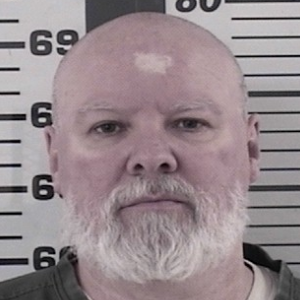 W
WScott Lee Kimball is a convicted serial killer, con man and fraudster from Boulder County, Colorado, who murdered at least four people over a two-year period; investigators strongly suspect him in as many as 21 other unsolved killings. For the first of those two years he was an informant for the FBI, which paid him and protected him from facing justice over some of his fraud schemes. Almost none of the information he gave the bureau was of any use in prosecuting other crimes, and much of it later proved false; the case greatly embarrassed the bureau. The agent who oversaw him during this period was disciplined; he insists he was not the only one responsible for enabling Kimball.
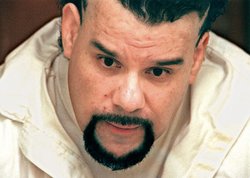 W
WJoseph Robert Kondro, known as The Longview Serial Killer, was an American serial killer implicated in the kidnapping, sexual assault and murder of three children in or near Longview, Washington – 8-year-old Rima Traxler, 12-year-old Kara Rudd and 8-year-old Chila Silvernails – in the 1980s and 1990s. Kondro confessed to the first two murders and was strongly suspected in the third, and possibly linked to the disappearances of many other young girls in the region, before his death in prison by natural causes in 2012.
 W
WÉtienne-Léon de Lamothe-Langon (1786-1864) was a prolific French author of many novels, apocryphal memoirs, and a controversial historical work.
 W
WEdward Williams, better known by his bardic name Iolo Morganwg, was a Welsh antiquarian, poet and collector of ill repute. He was seen as an expert collector of Medieval Welsh literature, but it emerged after his death that he had forged several manuscripts, notably some of the Third Series of Welsh Triads. Even so, he had a lasting impact on Welsh culture, notably in founding the Gorsedd. The philosophy he spread in his forgeries had an impact on early neo-Druidism. His bardic name is Welsh for "Iolo of Glamorgan".
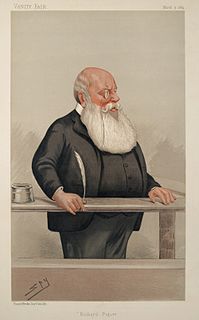 W
WRichard Pigott was an Irish journalist, best known for his forging of evidence that Charles Stewart Parnell of the Irish Land League had been involved in the murders of senior British government representatives. Parnell successfully sued for libel and Pigott shot himself.
 W
WDana Michelle Plato was an American actress. An influential child actor, she appeared on VH1's list of "100 Greatest Kid Stars". She was known for portraying Kimberly Drummond on the NBC/ABC sitcom Diff'rent Strokes (1978–1986), for which she received a Young Artist Award nomination.
 W
WDorothea Helen Puente was an American convicted serial killer. In the 1980s, Puente ran a boarding house in Sacramento, California and murdered various elderly and mentally disabled boarders before cashing their Social Security checks. Her total count reached nine confirmed murders, and six unconfirmed. Newspapers dubbed Puente the "Death House Landlady".
 W
WJames Earl Ray was an American criminal who assassinated Martin Luther King Jr. at the Lorraine Motel in Memphis, Tennessee, on April 4, 1968. Ray was convicted in 1969 after entering a guilty plea—thus forgoing a jury trial and the possibility of a death sentence—and was sentenced to 99 years of imprisonment.
 W
WJames Addison Reavis, later using the name James Addison Peralta-Reavis, the so-called Baron of Arizona, was an American forger and fraudster. He is best known in association with the Peralta land grant, also known as the Barony of Arizona, a pair of fraudulent land claims, which if certified, would have granted him ownership over 18,600 square miles (48,200 km2) of land in central Arizona Territory and western New Mexico Territory. During the course of the fraud, Reavis collected an estimated US$5.3 million in cash and promissory notes through the sale of quitclaims and proposed investment plans.
 W
WClaas-Hendrik Relotius is a German former journalist. He resigned from Der Spiegel in 2018 after admitting numerous instances of journalistic fraud.
 W
WJohn Edward Robinson is an American serial killer, con man, embezzler, kidnapper, and forger who was found guilty in 2003 for three murders committed in and around Kansas City, Kansas, receiving the death sentence for two of them. In 2005, he admitted responsibility for five homicides in Missouri, at trial in Kansas City, Missouri, in a deal to receive multiple life sentences without possibility of parole and avoid more death sentences. Investigators suspect more victims remain undiscovered.
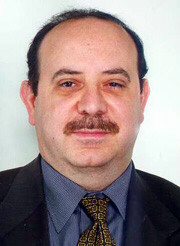 W
WJohn Ruffo is an American former business executive, white-collar criminal and confidence man, who in 1998 was convicted in a scheme to defraud many US and foreign banking institutions of over 350 million US dollars. The swindle is considered one of the most significant cases of bank fraud in US history. He has been a fugitive from justice ever since, and is on the U.S. Marshals 15 Most Wanted Fugitives list.
 W
WEdward Simpson was a British geologist and forger of antiquities, such as arrowheads and fossils. He was also known as Fossil Willy, Old Antiquarian, Cockney Bill, Bones, and Shirtless. Other names included John Wilson, of Burlington, and Jerry Taylor, of Billery-dale, Yorkshire Moors.
 W
WAdolf Ludvig Stierneld, was a Swedish baron, politician, courtier and collector of historical documents. Recent historical research has revealed him to be one of Sweden's best and most prolific document forgers. He was born in Stockholm and died in Gripsholm.
 W
WLucio Urtubia Jiménez (1931–2020) was a Spanish anarchist known for his practice of expropriative anarchism through forgery. At times compared to Robin Hood, Urtubia carried out bank robberies and forgeries throughout the 1960s and 1970s. In the words of Albert Boadella, "Lucio is a Quijote that did not fight against wind mills, but against a true giant".
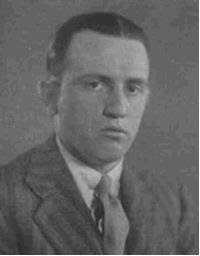 W
WLawrence Gwyn Van Loon was an American general practitioner, amateur historical linguist and forger.
 W
WThe Voller Brothers, William, Alfred and Charles, were craftsmen who worked in Streatham, London, from 1885 to 1927 and are best known for their imitations of fine violins and the imfamous "Balfour" Stradivarius.
 W
WDenis Vrain-Lucas (1818–1882) was a French forger who sold counterfeit letters and other documents to French manuscript collectors. He even wrote purported letters from biblical figures in French.
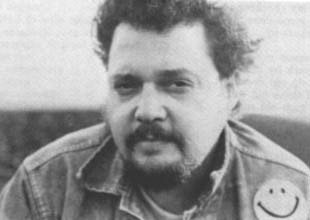 W
WWilliam Wantling was an American poet, novelist, ex-Marine, ex-convict, and college instructor born in East Peoria, Illinois. After graduating high school he joined the Marine Corps until 1955. He served in Korea during 1953. After leaving the Marines he moved to California and eventually had a son with his then-wife Luana. Wantling went to San Quentin State Prison in 1958 convicted of forgery and possession of narcotics. During his imprisonment Luana divorced him and took custody of the child. He was released in 1963, and returned to Peoria. There he married Ruth Ann Bunton, a fellow divorcee, in 1964. In 1966 he enrolled at Illinois State University, where he received both a BA and MA. He taught at the university up until his death on May 2, 1974. Wantling died of heart failure, possibly brought about by his extensive drug use.